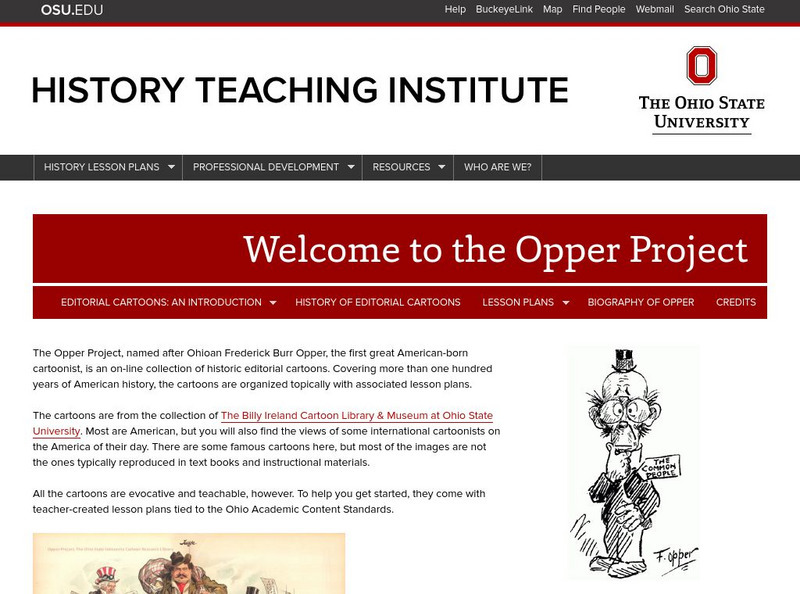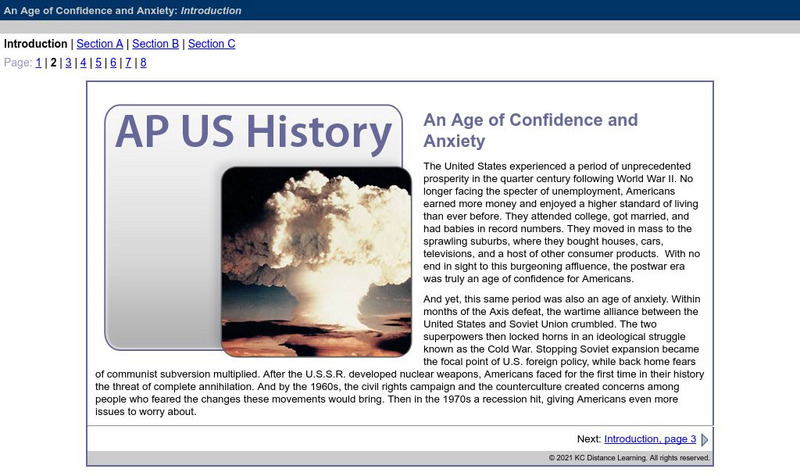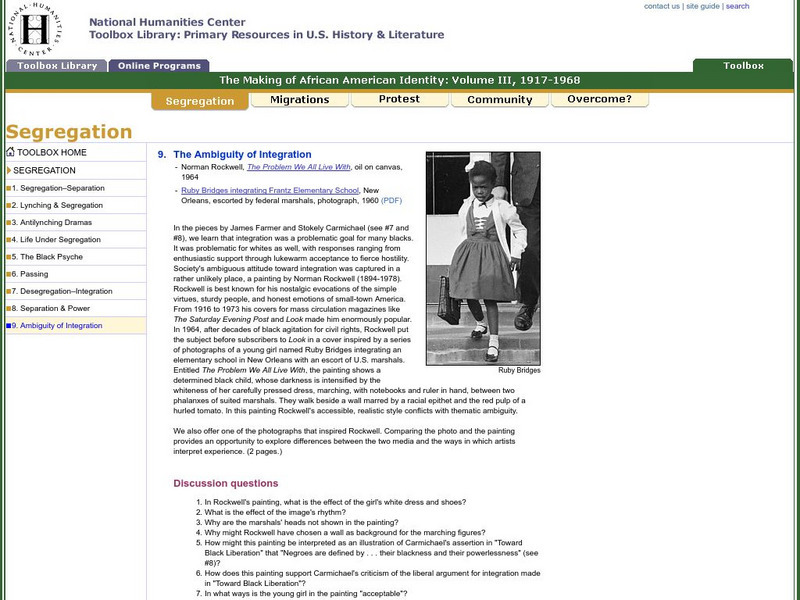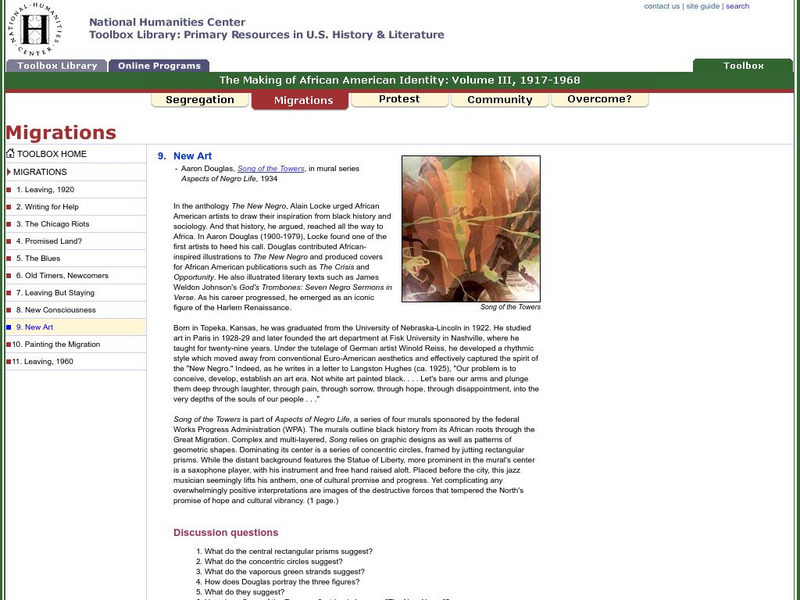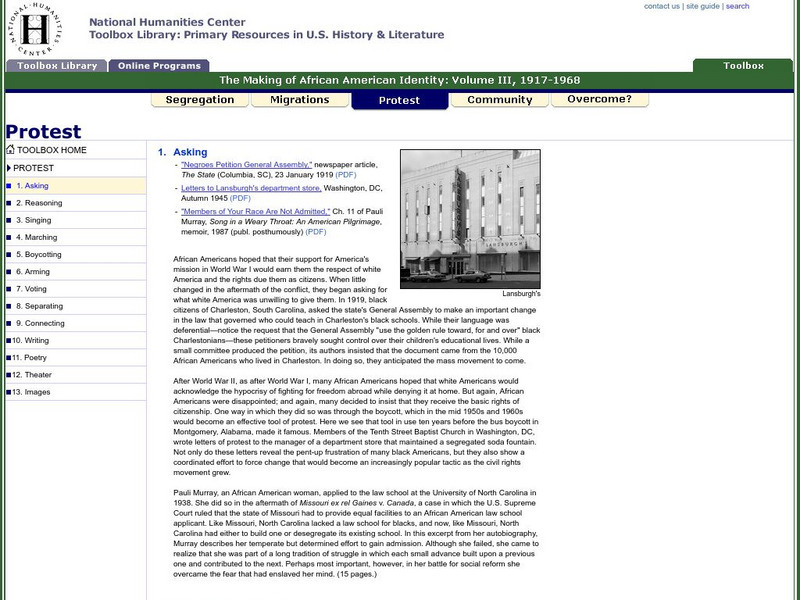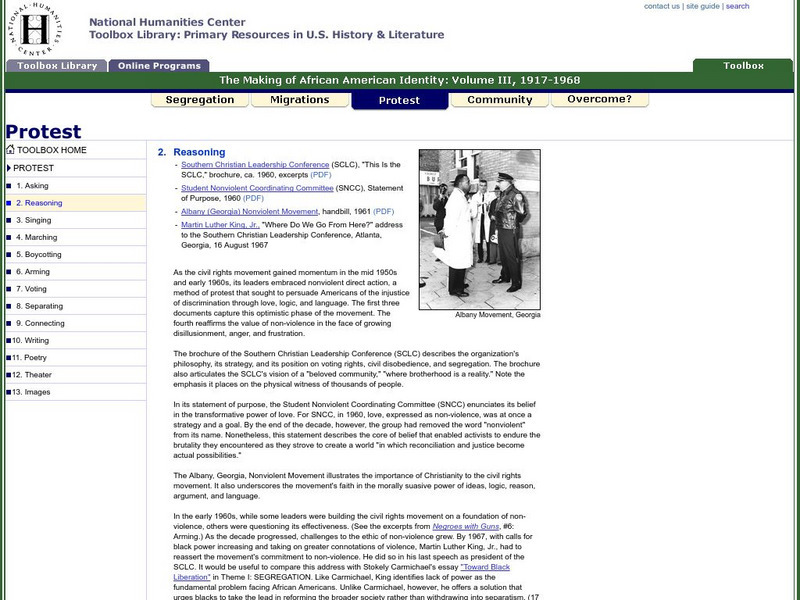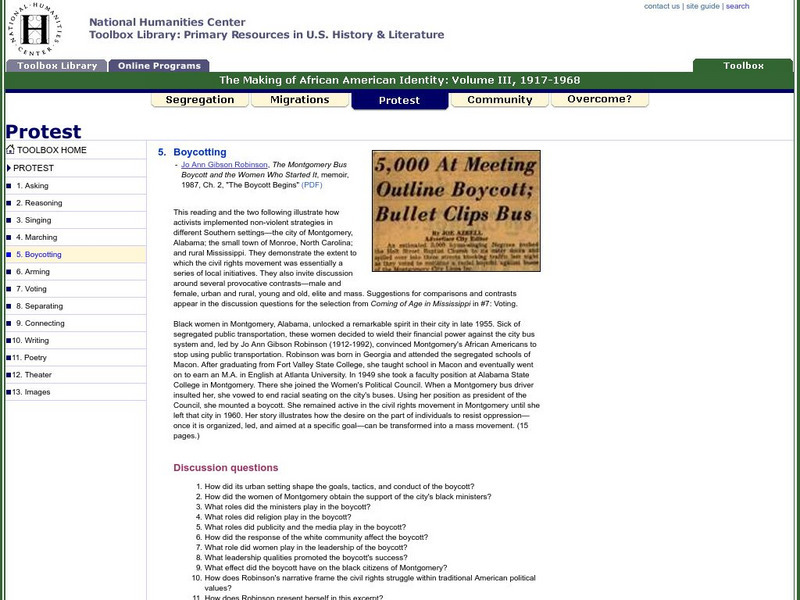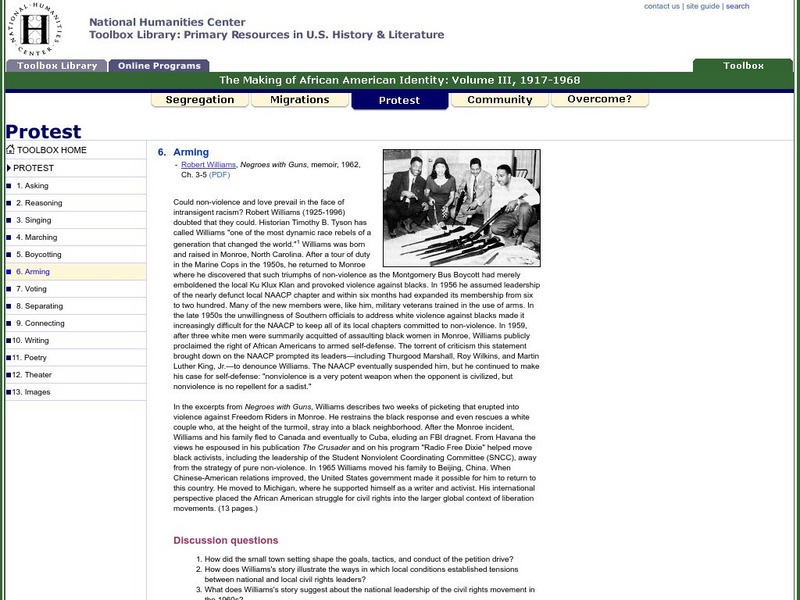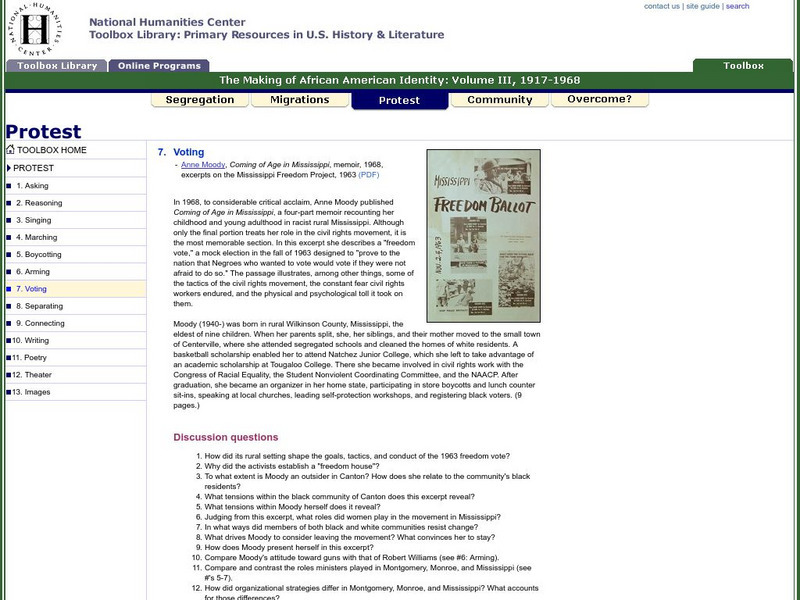Ohio State University
Opper Project: Using Editorial Cartoons to Teach History (Lesson Plans)
Two dozen lessons that focus on using political cartoons as primary source resources for teaching American history. Lessons cover a range of topics in U.S. history from the Civil War era forward and are linked to Ohio content standards.
CK-12 Foundation
Ck 12: Epsid 2019 2020 Us History
Flexbooks 2.0 are interactive, customizable, digital textbooks. Flexbooks are standards-aligned. Flexi, a student tutor, is integrated into each book to guide you on your learning journey. Flexi can assist in learning, answer questions,...
National Women’s History Museum
National Women's History Museum: Rosa Parks
Rosa Parks refused to give up her seat and set in motion one of the largest social movements in history, the Montgomery Bus Boycott.
National Women’s History Museum
National Women's History Museum: Coretta Scott King
Although best known for being the wife of famed civil rights leader Dr. Martin Luther King Jr, Coretta Scott King created her own legacy. Learn interesting details about her life.
National Women’s History Museum
National Women's History Museum: Fannie Lou Hamer and Social Activism
This instructional activity provides an insight into the rhetoric and social action of Fannie Lou Hamer. By focusing on three speeches through her career, students will better be able to understand how she was able to influence social...
National Women’s History Museum
National Women's History Museum: Timeline: Civil Rights Movement
Explore this timeline of women in the Civil Rights movement.
Department of Defense
Do Dea: Ap Us History: Unit 8: An Age of Confidence and Anxiety
This extensive learning module examines the United States' response to the global uncertainty and instability that followed World War II and the ways that marginalized groups challenged discrimination, and the counter-responses to their...
PBS
Pbs Learning Media: Fannie Lou Hamer Civil Rights Movement in Rural Mississippi
A collection that uses primary sources to explore Fannie Lou Hamer and the civil rights movement in rural Mississippi.
PBS
Pbs Learning Media: Rosa Parks: Civil Rights Activist
Through two primary source activities and a short video, students will learn about Parks' lifelong commitment to the Civil Rights Movement.
PBS
Pbs Learning Media: Booker T. Washington: Orator, Teacher, and Advisor
Through two primary source activities and watching a short video, students will learn about Booker T. Washington's commitment to African American education, and assess his ideas about how to achieve equality for African Americans in the...
Google Cultural Institute
Google Cultural Institute: African American Women and the Civil Rights Movement
This exhibit spotlights the voice of African American Women leaders in the movement and highlights their significant roles and contributions.
Children's Museum
The Children's Museum of Indianapolis: Children in the Civil Rights Movement
Meet ordinary children of the past who inspire us even today. Step back in time to a United States full of racism and segregation. Students will explore the Civil Rights Movement and leaders like Dr. Martin Luther King, Jr. They'll see...
National Humanities Center
National Humanities Center: Toolbox Library: Making of African American Identity: Forward: Protest
An article that describes an NAACP meeting with Woodrow Wilson and excerpts from the film "Birth of a Nation." The text examines the gains and setbacks that mark the period of 1907 to 1917 for black Americans.
National Humanities Center
National Humanities Center: Toolbox Library: The Black Psyche, Making of African American Identity: V. 3
Woodcuts that explore the effects of segregation on the black psyche. Links to Elizabeth Catlett's "The Negro Woman," a series of fifteen linoleum cuts are provided, as well as a summary of their meaning.
National Humanities Center
National Humanities Center: Toolbox Library: Ambiguity of Integration: Making of African American Identity
A painting and a photograph illustrating some of the problems posed by racial integration. Norman Rockwell's illustration is compared to the experiences of Ruby Bridges.
National Humanities Center
National Humanities Center: Toolbox Library: Making of African American Identity: Old Timers, Newcomers
An editorial cartoon and a newspaper article illustrating the tensions between members of established African American communities in the North and Southern migrants. Links to both resources are provided within this site.
National Humanities Center
National Humanities Center: Toolbox Library: New Art, Making of African American Identity: V. 3
Artistic expressions of the new black self image inspired by migration to the urban North. This focus of this site is "Song of the Towers", a series of four murals sponsored by the federal Works Projects Administration, outlining black...
National Humanities Center
National Humanities Center: Toolbox Library: Asking, Making of African American Identity: V. 3
Attempts by African Americans to petition for their civil rights are described within this resource. This include attempts by the black citizens of Charleston to ask for civil rights by petition rather than demand them with protest.
National Humanities Center
National Humanities Center: Toolbox Library: Reasoning, Making of African American Identity: V. 3
Brochures and a speech from the Southern Christian Leadership Conference describing the organization's philosophy, its strategy, and its position on voting rights, civil disobedience, and segregation.
National Humanities Center
National Humanities Center: Toolbox Library: Singing, Making of African American Identity: V. 3
An analysis of the role music played in the civil rights movement. The well known spiritual, "We Shall Overcome," is referenced as playing a key role in supporting this movement.
National Humanities Center
National Humanities Center: Toolbox Library: Marching, Making of African American Identity: V. 3
This resource by the National Humanities Center discusses the role of physical protest in the civil rights movement. Its primary focus, the print "Freedom Now," by Reginald Gammon (1921-2005), depicts the massing of bodies in the name of...
National Humanities Center
National Humanities Center: Toolbox Library: Boycotting, Making of African American Identity: V. 3
A memoir describing the 1955 Montgomery bus boycott by Jo Ann Gibson Robinson titled, "The Montgomery Bus Boycott and the Women Who Started It." This text describes the importance of African American women in initiating the well-known...
National Humanities Center
National Humanities Center: Toolbox Library: Arming, Making of African American Identity: V. 3
This resource offers a memoir that examines the role of armed self-defense in the civil rights movement. An excerpt from the text "Negroes with Guns", by Robert Williams is made available here, describing his approach towards civil...
National Humanities Center
National Humanities Center: Toolbox Library: Voting: Making of African American Identity: V. 3
The efforts to secure African American voting rights in Mississippi are described within this resource. Anne Moody's, "Coming of Age in Mississippi", a four-part memoir recounts her childhood and young adulthood in racist rural Mississippi.


